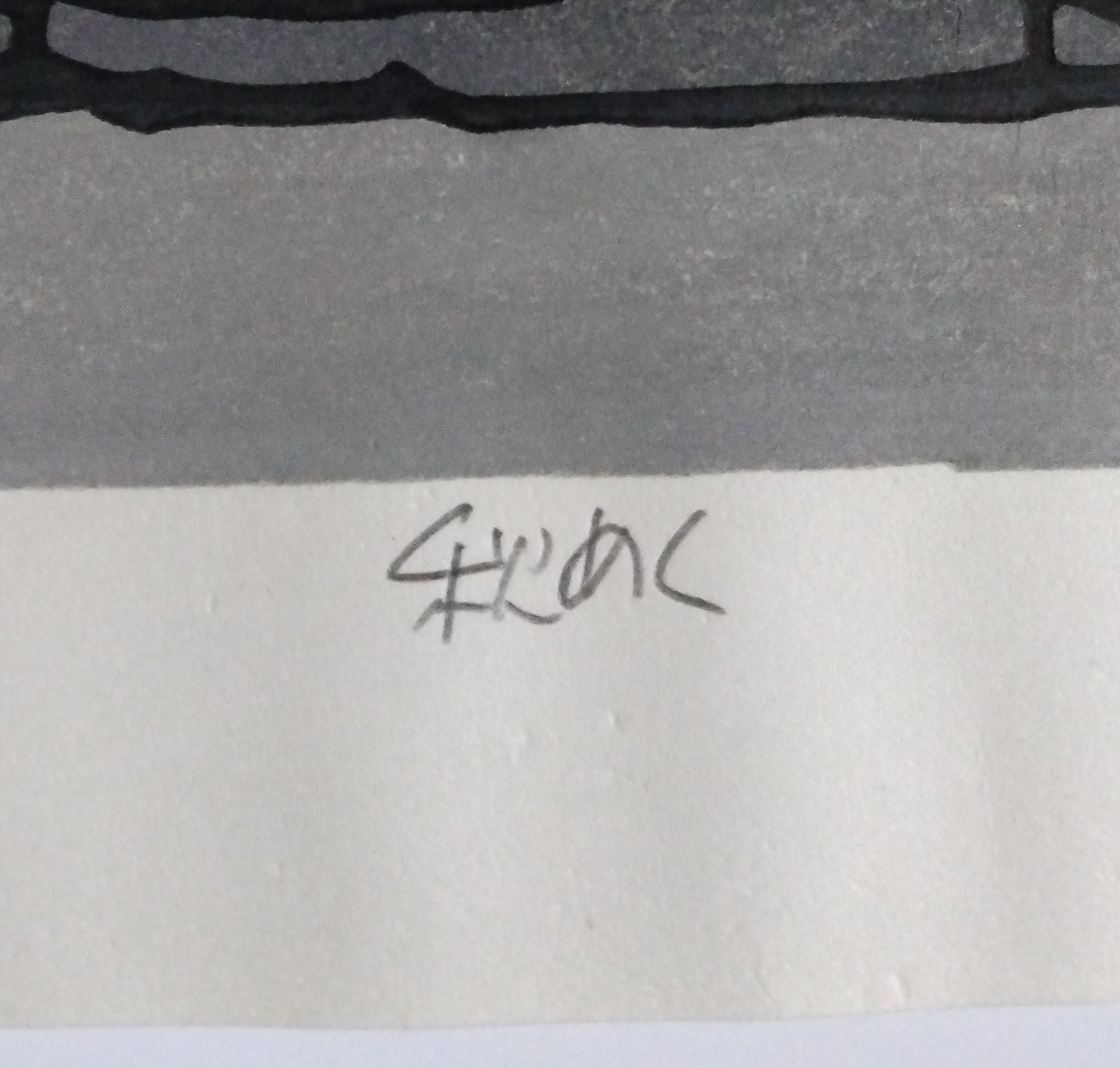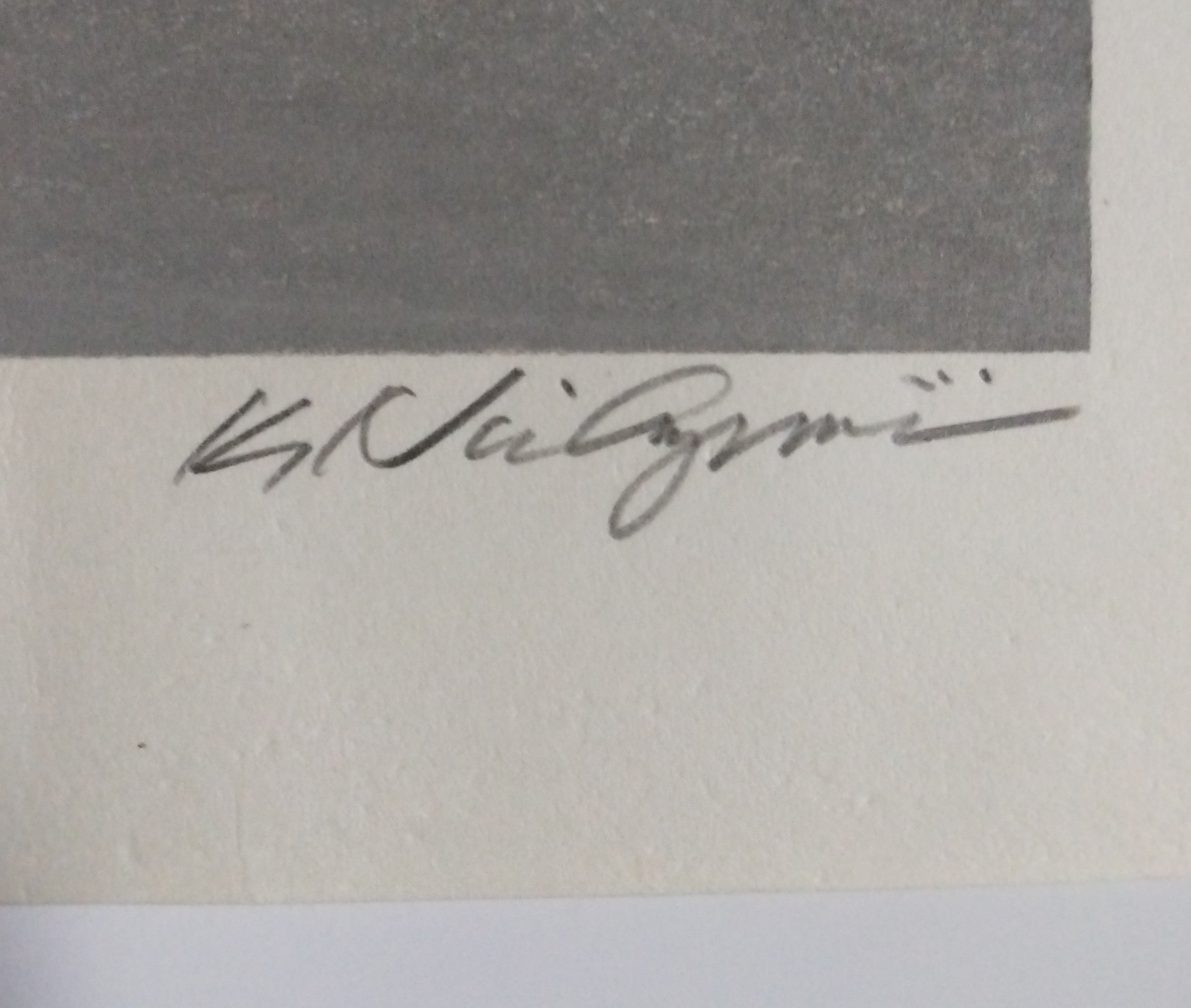Description
Woodblock Print by Katsuyuki Nishijima, "Becoming Autumn" (Aki Meku). Artist signed print. Ca. 1980's. Vertical format; H. 10.5"(26.75cm) X W. 7.5"(19cm). Excellent condition. *Fully matted, framed, & delivered option may be available for local purchasers (I-5 corridor from Seattle to Blaine, WA). Please contact for details.
The image is of street scene with a small Shinto Shrine in front of a wooden building with dark gray roof tiles. Next to the Shrine is small roofed gateway leading into in inner space and building; possibly a courtyard, storehouse, or living quarters. Whatever it is, the stone covered narrow pathway leads one into the picture and also creates a sliver of blue sky between the rooftops of the foreground buildings. At the front of the small Shrine, bright reds and whites of the cloth waving in the breeze and the flowers places as offerings further serve to provide contrast in this image. Whereas many of Nishijima's prints include a place name in the title or in the image itself, this one could be a scene in one of many locations that have historical preservation districts, such as Kyoto or Takayama, or a number of other places represented in his works. Just as the narrow path leads one's imagination to the destination, so does the image itself. I've heard that the subject location is in Kyoto's Nishijin District, which is a neighborhood filled with artisan weavers. If that is true, the imagined image would also include the cacophony of weaver's looms behind each wall, and down each narrow alleyway.
Katsuyuki Nishijima, 1945 – present.
Katsuyuki Nishijima was born in Yamaguchi Prefecture at the southwest end of the main island of Honshu. At the age of 19, he started studying the art of woodblock printing making at the Mikumo Publishing Company in Kyoto. By the early 1970’s, he was beginning his career as a Sosaku Hanga (Creative Print) artist. As opposed to traditional woodblock prints of the 19th Century and earlier that were created by a team of artisans composed of designers, carvers, colorists, printers, and publishers; the Sosaku Hanga movement of the 20th Century highlighted the work of artists who self-drew, self-carved, and self-printed their own expressive works. Nishijima is a very popular contemporary Kyoto print artist and his works have been collected and exhibited widely in Japan, the US, and Europe.
Nishijima’s works could be called “romantic” in that there is something idealized and old-fashioned about his images. They rarely contain people; or modern elements such as cars, telephone wires, or even the ubiquitous Japanese trains. They focus on architectural elements such as tiled and thatched rooftops, verandas, noren shop curtains, the wooden latticework in front of Kyoto machiya buildings, stone walls, as well as Japanese rural landscapes. While these could be considered romantic and detached from reality, these elements still exist in modern-day Japan and are what visitors are drawn to and remember in places like Kyoto, Shigaraki, Takayama, and the like. One could say that instead of romanticizing Japanese scenery, he’s actually bringing out the essence of what is beautiful and important in humanity’s view of traditional Japan.






